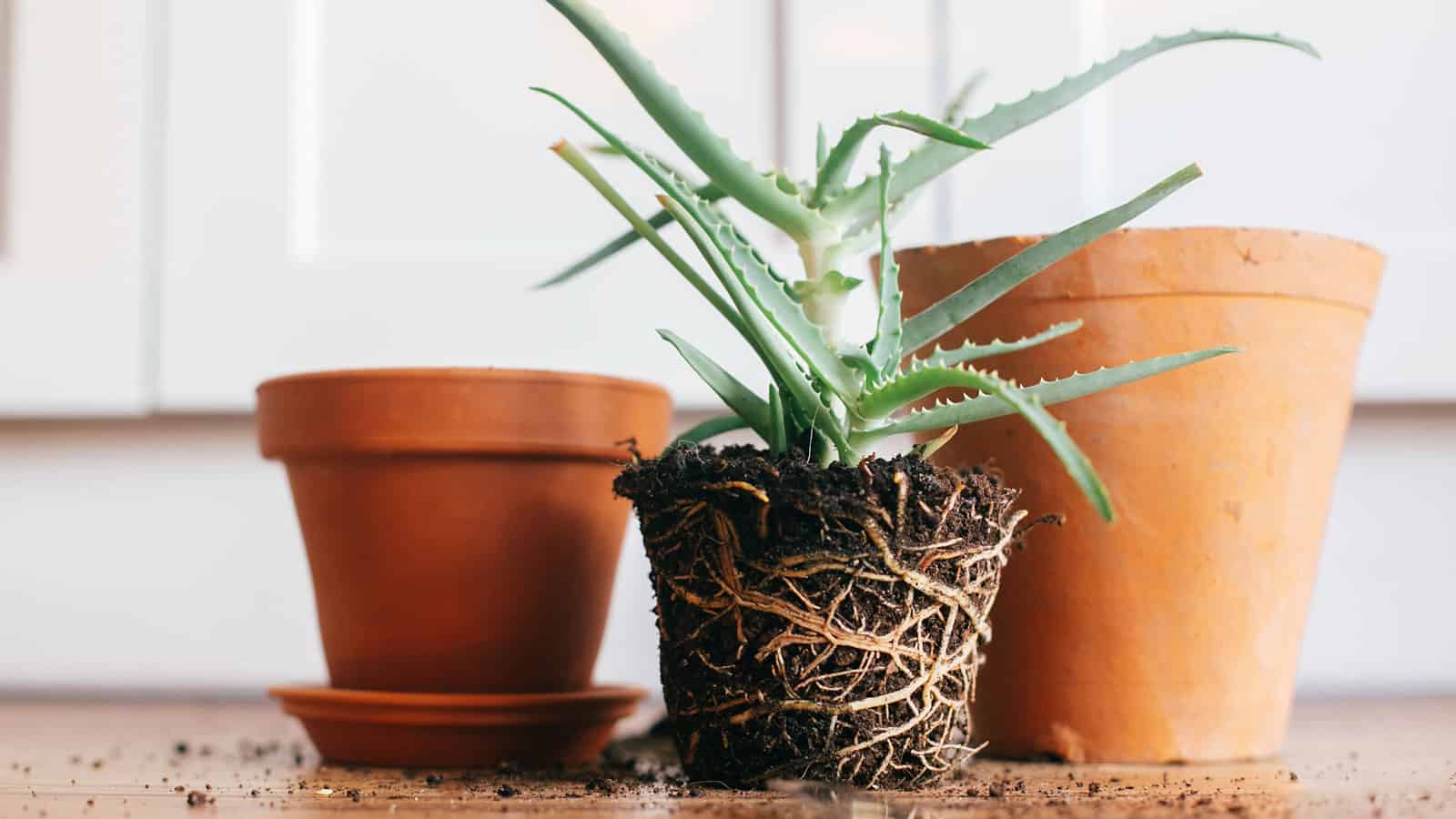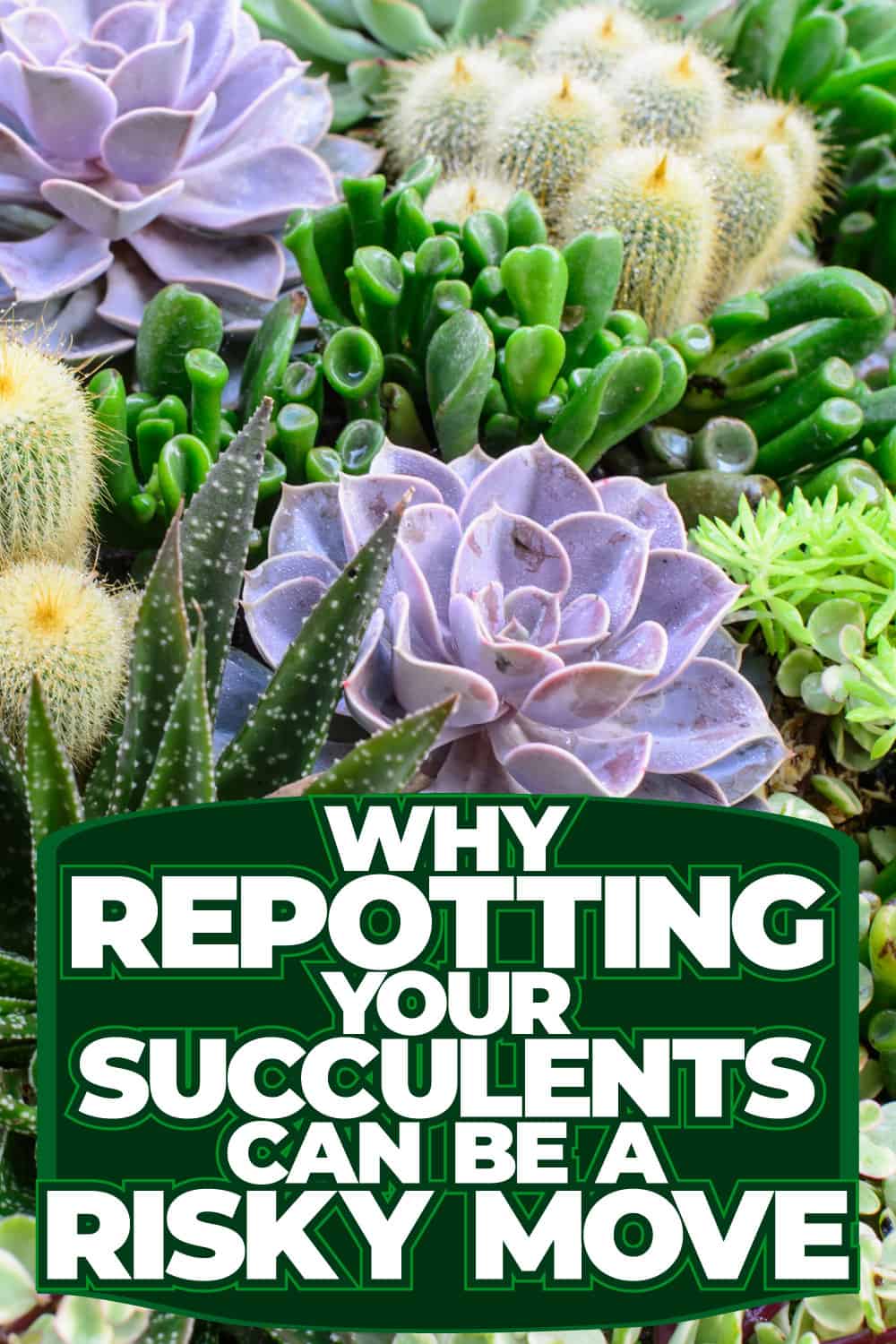Ready to give your succulents a fresh new home? Think twice before you start repotting!
While it might seem like a simple task to transfer your succulent to a new pot, there's always the risk that it might not survive in its new environment.

Repotting your succulents is more than a simple task; it's a delicate dance that can make or break their growth.
There are many reasons why why repotting isn't just a straightforward process.
In this article, we'll discuss the risks of repotting and discover the best practices to ensure your succulents not only survive but thrive in their new environment.
The Risks of Repotting Succulents
When you decide to repot succulents, it's crucial to understand the potential stress this can cause your plants.
Repotting can lead to root damage, interruptions in their growth cycle, and an increased vulnerability to pests and diseases.
Stress and Shock to Plants
Succulents thrive on consistency, so when you repot them, they undergo a period of adjustment. This can lead to stress and shock.
Shock may manifest as wilting, leaf drop, or halted growth, indicating the plant is struggling to adapt to its new environment.
It's crucial to minimize changes in light, temperature, and watering practices during and after repotting to reduce stress.
Potential Root Damage
The root system of a succulent is delicate. During repotting, it's easy for these fragile roots to break or become damaged.
Broken roots can compromise the plant's ability to absorb water and nutrients, sometimes leading to the death of the succulent if the damage is severe.
Handle the root ball with care and look for signs of root rot during the process. If you're faced with this problem, try this: 4 Steps to Save Your Succulents from Rot
Disruption of Growth Cycle
Succulents have a specific growth cycle, and disrupting it can result in poor plant health.
Repotting out of season, particularly during the dormancy period, can interfere with the cycle, causing the plant to expend energy on recovering from repotting stress instead of on healthy growth.
Ideally, repot before the plant's active growth phase to give it the biggest chance of survival.
Pest and Disease Exposure
Exposing succulents to new soil and environments can inadvertently introduce them to pests and diseases.
Even a small amount of lingering moisture can result in fungi or bacteria growth, so ensure the new pot has adequate drainage to prevent water from sitting at the roots.
Keep a close eye on your succulent post-repotting for early signs of pest or disease issues.
Here's something to try: Pest Oil On Succulents: Dos and Don’ts
When to Consider Repotting
Repotting can give your succulents a new lease on life, but recognizing the right time is crucial.
Pay attention to these specific indicators that suggest it's time for a change.
Signs of Overgrown Roots
If you notice roots poking out of your pot's drainage holes or circling the surface of the soil, that's a clear sign your succulent has outgrown its current home.
It's time to give your plant room to expand by moving it to a larger pot.
Soil Nutrient Depletion
When your succulent's growth seems to slow down, no new growth, or the leaves start to look lackluster, the soil may be depleted of nutrients.
Rejuvenate your plant with fresh potting mix to restore essential nutrients needed for healthy growth.
Check out this MiracleGro premium potting mux for succulents on Amazon.
Season and Timing for Repotting
The best time for repotting is during the late winter or early spring as your succulents begin a new growth cycle.
This timing aligns with their natural growth patterns, providing them with the perfect conditions to thrive post-repotting.
The Repotting Process
When repotting your succulents, your primary focus should be on minimizing stress to the plant.
Preparation Steps
Before you even remove your succulent from its original container, you'll need to gather the right materials and set the stage for a successful transition.
Here's what you need to do:
1. Select a New Pot
Choose one that's slightly larger than the current one and has proper drainage holes.
2. Prepare the Potting Mix
Use a well-draining mix specific to succulents or create your own. The mix should have a sand mixture for better drainage.
Gentle Handling Techniques
Your succulent is delicate, especially during repotting. To avoid damage, follow these handling techniques:
1. Avoid Watering Immediately Before Repotting
It's advisable to avoid watering your succulent immediately before repotting. Drier soil is easier to remove and reduces the risk of damaging the roots.
2. Remove the Succulent Gently
Begin by loosening the soil around the edges of the pot. Gently tilt the pot and support the succulent at its base.
Ease the plant out by supporting both the base and the root ball. Avoid pulling the plant by its leaves or stem, as this can cause breakage.
3. Examine and Prune Roots (If Necessary)
Once you have successfully removed the plant, inspect the root system. Look for any signs of rot or overgrowth.
If you notice any damaged or excessively long roots, prune them carefully using sterilized scissors or pruning shears.
This pruning helps to encourage healthier growth and prevents potential issues in the new pot.
Ensure your cuts are clean and avoid excessive trimming, as this can stress the plant.
4. Handle with Clean Hands and Tools
Always handle your succulent with clean hands and use sterilized tools. This precaution helps prevent the transfer of pests and diseases to the vulnerable roots.
5. Support the Entire Plant
When moving the succulent, make sure to support the entire structure - leaves, stem, and roots.
This comprehensive support reduces the risk of physical stress and damage to the plant.
6. Mind the Leaves
Be particularly cautious with the leaves. Succulents often have fragile leaves that can easily snap or fall off. Handle the plant by its more robust parts to avoid leaf damage.
Post-Repotting Care
After the repotting is complete, your succulent needs time to recover. Ensure a smooth transition with the following care tips:
1. Acclimatize After Repotting
After repotting, give your succulent time to acclimatize to its new environment.
Avoid direct sunlight and water sparingly until the plant shows signs of new growth. Initially water your succulent lightly to avoid shocking the roots.
2. Monitor and Adjust
Keep an eye out for signs of stress and adjust care as needed, such as providing more sunlight or changing the watering frequency.
Watch this video for more helpful tips.
Building Your Confidence in Succulent Repotting
While repotting succulents might seem daunting due to the risks involved, it's a vital part of their care and growth.
With the right knowledge discussed above, you can turn this delicate task into an opportunity for your succulents to flourish.
Remember, gentle handling, proper root care, and patience are your best tools.
Happy gardening!


